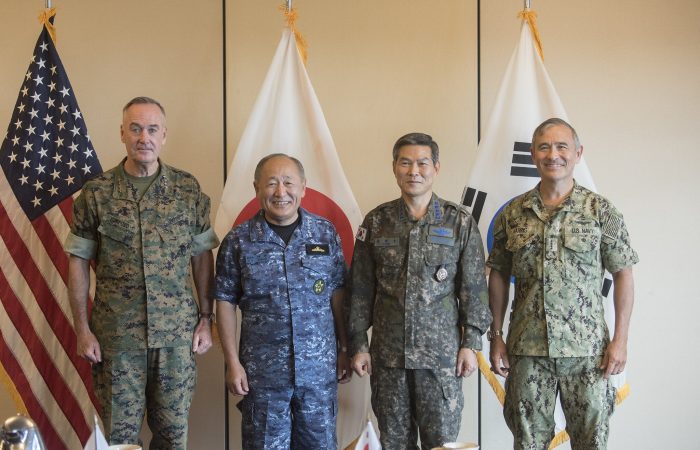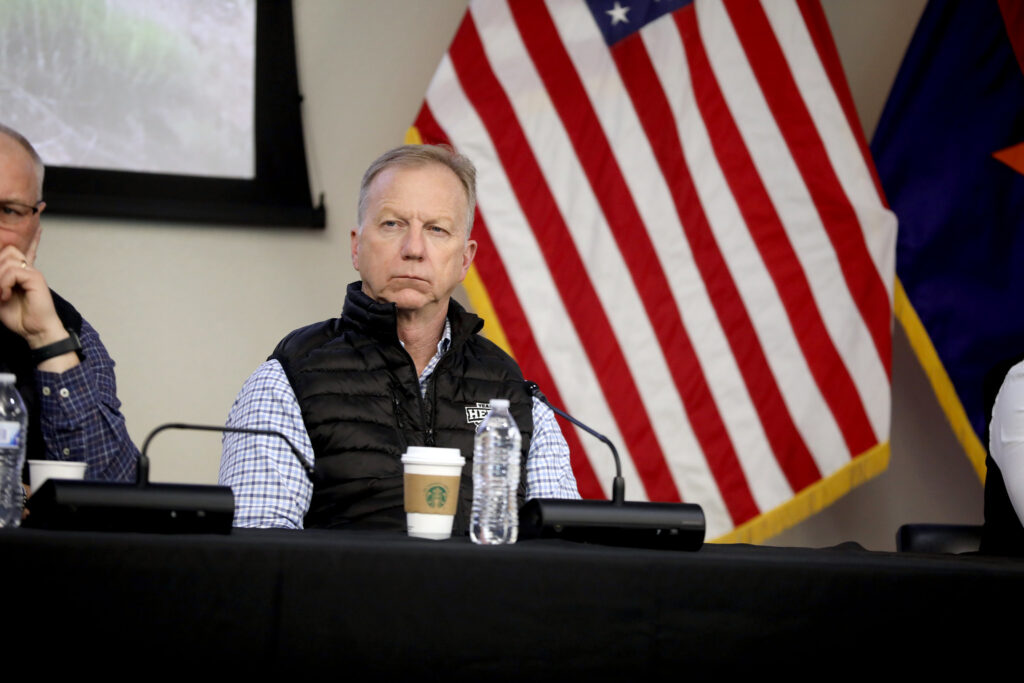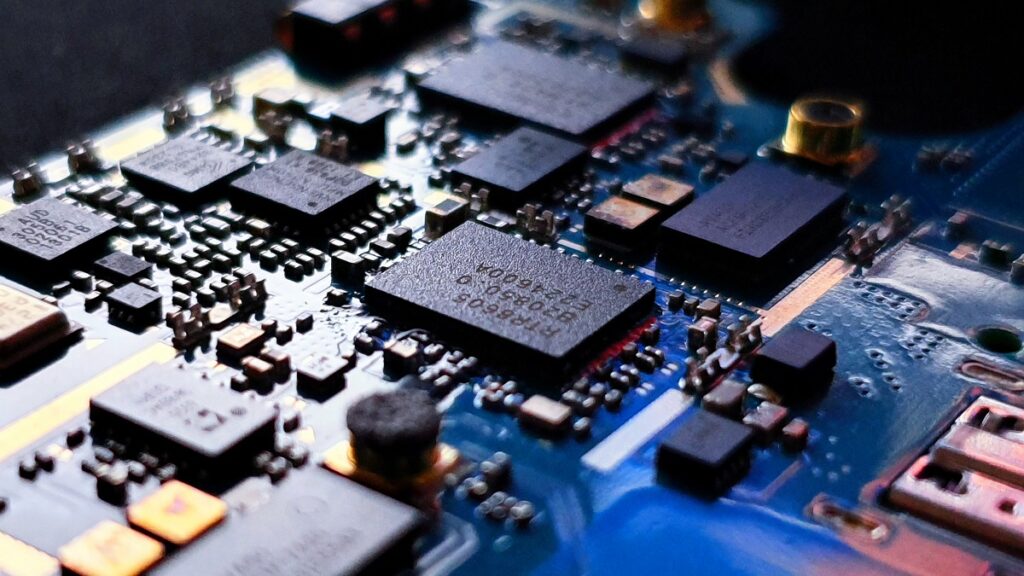The possibility of the ROK acquiring its own nuclear assets to counter the nuclear threat from North Korea is now being openly discussed in South Korea. Despite the US commitment to provide Extended Deterrence and to shelter the ROK under its nuclear umbrella, in recent polls more than 70% of South Koreans supported the development of an indigenous nuclear deterrence by the ROK.
There are, however, several serious obstacles to be overcome if the ROK is to acquire its own nuclear capability: it will likely be a very costly project; developing and testing nuclear weapons within the narrow geographical scope of the Korea Operational Theater will be very challenging, and perhaps would require US assistance; the development timeline is currently unclear; and there are legal and procedural issues regarding compliance with international agreements.
The ROK recognizes a potential nuclear threat from China in the longer term, but the immediate problem is the growing menace of North Korean nuclear and missile threats. There is a clear disparity between the conventional capabilities of the ROK-US alliance and North Korean nuclear capacities. The US and the ROK recently conducted large-scale combined military field drills, codenamed Freedom Shield. North Korea reacted incrementally by demonstrating its nuclear and missile capabilities, including a tactical nuclear warhead known as Hwasan-31, and new delivery vehicles such as the Hwasong-18 solid-fuel ICBM, new cruise missiles, and Unmanned Underwater Vehicles.
This asymmetrical situation is driving calls for Seoul to acquire its own nuclear capability, and for Washington to reconsider its policy on nuclear deterrence against North Korea. Three options have been suggested for such a shift: the US could allow the ROK to become a de facto nuclear power, without acknowledging this status; the US could share the planning and operation of US nuclear assets according to a pre-planned ROK-US combined defense posture to deal with North Korean nuclear attacks, copying the NATO formula; or the US could officially and explicitly deploy its own tactical nuclear weapons on the Korean Peninsula, in response to specific scenarios.
From the US perspective, however, none of these options can be justified in accordance with the 2022 Nuclear Posture Review (NPR). This document attempts to allay South Korean anxiety by presenting Extended Deterrence and a Tailored Deterrence Strategy as viable alternatives to the ROK acquiring its own nuclear capabilities. Moreover, the US is still downplaying North Korean claims that it has now completed the development of miniaturized nuclear warheads and ICBMs capable of threatening the continental US. Likewise, the US is skeptical about the recent announcement of Hwasan-31 tactical nuclear warheads deliverable by KN-class short/medium-range ballistic missiles and super-large artillery guns.
Although US analysts argue that North Korea still faces significant technical, structural and operational challenges before it can be considered an effective nuclear power, the ROK perspective is very different. Experts may be divided about whether the North Korean nuclear weapons and missiles genuinely endanger the continental US, but it seems undeniable that North Korean tactical nukes have suddenly become an imminent threat for South Korea, for the USFK bases upon which ROK security relies, and for US forward military bases such as Guam and Hawaii.
The consensus among ROK analysts is that the existing conventional superiority of the ROK-US combined defense posture is insufficient to deter North Korean nuclear and missile threats, and that even a strong US commitment to Extended Deterrence is unfit for purpose.
Since President Yoon Sukyeol came to power, in May 2022, his administration has expressed serious anxiety about the incremental escalation of North Korean nuclear and missile threats during the previous administration, and has sought alternative options for nuclear deterrence. Yoon has taken a far more hawkish stance than his predecessor, Moon Jae-in, and has formulated hard-liner policies toward North Korea as well as aligning his foreign and security approaches with the US Indo-Pacific Strategy.
The ROK-US alliance also suffered from the depredations of former US President Donald Trump, and its rehabilitation appears to be Yoon’s highest priority. Large-scale combined military exercises and drills in the field were resumed in the latter half of 2022, and the ROK-US alliance is on course to become a global comprehensive strategic alliance, according to the joint statements from the Biden-Yoon summit of May 2022 and the 54th Security Consultative Meeting between the ROK and the US held last November.
South Korea’s vision of the US Indo-Pacific Strategy, as announced last December, allows the ROK to expand its role to support peace and stability across the Indo-Pacific region. The scope and depth of the ROK-US alliance is to be extended to areas beyond the Korean Peninsula, to the wider Indo-Pacific region and potentially even further, with some aid supplied (as yet non-military) to relieve the European crisis caused by the war in Ukraine which began in February 2022.
President Yoon has also been attempting to fulfill his campaign promise to normalize South Korea’s relations with Japan. Both Japan and the US have welcomed his attempt to set aside unresolved historical issues in order to focus on ROK-Japan rapprochement and thus to deal with present-day problems. He is hoping to consolidate the General Security of Military Information Agreement between the ROK, Japan, and the US, which has been on-and-off for some time; also to promote trilateral security talks; and to implement the Trilateral Information Sharing Arrangement, signed in 2017, to share missile data in real time.
Against this background, with trilateral security cooperation between the ROK, Japan, and the US now likely, President Yoon is to make his first state visit to the US on April 26, 2023. During his summit with US President Joe Biden any discussions about the ROK acquiring nuclear capability will be severely constrained, by the following factors.
First, the US remains committed to its NPR and to the international Non-Proliferation Treaty (NPT). Even if the ROK were to acquire its own nuclear deterrent, the US is most unlikely to take any stance which lays it open to accusations of breaking international norms and regulations specified by the NPT and the International Atomic Energy Agency.
Second, the US National Defense Strategy, released October 27, 2022, proposes an Integrated Strategy which aims to co-ordinate the non-nuclear capabilities of US allies more effectively with US nuclear forces, to better deal with any nuclear threats. The US wants its allies to share a novel framework designed to enhance the utility of advanced and sophisticated conventional weapons, which the US will support by providing Tailored Deterrence Strategies for its allies.
Third, the US has never admitted that North Korea is a genuine nuclear power, precisely to avoid encouraging the ROK to pursue its own nuclear capability so as to establish nuclear parity between the two Koreas. The situation is analogous to the nuclear parity between India and Pakistan. This despite the fact that North Korea declared itself a nuclear power in 2018, and announced its nuclear policy and its strategic rationale for using its indigenous nuclear weapons in August 2022. If the US were to agree to the ROK developing its own nuclear capabilities then China and Russia would certainly exploit the opportunity to rebuke US for a hypocritical violation of the NPT.
North Korean reaction to the recent Freedom Shield ROK-US combined defense posture exercise exposed a clear asymmetry: the ROK and USFK practiced conventional counter-measures against North Korean military provocations on the Korean Peninsula, and North Korea responded by demonstrating its rapidly expanding nuclear and missile capabilities. This asymmetric gap cannot be allowed to grow further: nuclear-to-nuclear deterrence between the two Koreas is the only path forwards.
Tensions between the ROK and Japan arising from the Japanese Imperial occupation of Korea still dominate relations between these two US allies, and the US has long wanted the ROK to put these issues behind them. President Yoon is working hard to achieve this, as can be seen from the Joint Statement of 13th Defense Trilateral Talks, held April 14, 2023 between the ROK, the US and Japan in Washington DC. The G7 summit to be held in May will be held in Hiroshima, target of the first nuclear bomb used during World War II. The US may take this opportunity to advance its long-term strategy of establishing an Indo-Pacific NATO by holding a meeting of the Extended Deterrence Strategy Consultative Group (EDSCG) to include Japan for the first time, another enhancement of trilateral security cooperation, and intended to deter nuclear threats from both North Korea and China.
Many South Korean analysts have suggested establishing a combined nuclear deterrence along the lines of the NATO-style sharing of US nuclear assets which guarantees discussion between allies over nuclear weapon decision making and usage plans. A Nuclear Planning Group between the ROK and the US would extend beyond the scope of the existing forums, such as the EDSCG meeting, the US-Korea Integrated Defense Dialogue, and the ROK-US Deterrence Strategy Committee Table-Top Exercise (DSC TTX).
The 8th DSC TTX was held February 22, 2023 at the Pentagon. Military and diplomatic representatives from the ROK and the US explored Extended Deterrence in the light of North Korea’s rapidly expanding nuclear capabilities, but this failed to allay South Korean anxieties for several reasons.
First, Extended Deterrence is not part of the ROK-US Combined Forces Command (CFC) structure. It sits uncomfortably between the conventional deterrence from CFC and the nuclear deterrence capabilities under sole control of the US, in a kind of gray zone.
Second, a single day’s wargaming at the DSC TTX is woefully inadequate, not least because the wargame frameworks only encompassed ideas assessed as actionable and affordable, using existing or maturing nuclear strategies, taking no account of aspirational solutions such as Integrated Deterrence capabilities with both conventional and nuclear assets.
Third, the US argues that the ROK’s conventional capabilities are an essential part of Extended Deterrence and that existing mechanisms commit the US to providing a new form of strategic deterrence. Unfortunately, this is inherently unconvincing while the US nuclear capabilities remain a US preserve, without South Korean input.
Its Indo-Pacific Policy is now a national priority for the US, and the ROK has taken a significant geopolitical risk by aligning with it. The ROK-US military alliance is already changing and expanding, so it would make good sense for the US to share information about concepts and operating procedures of US nuclear assets with the ROK. The CFC should set up a combined nuclear planning component to deal with all North Korean nuclear and missile threats, whether aimed at the US or at South Korea, and the military interests and objectives of the ROK should be synchronized with those of the US.
On the sidelines of the upcoming G7 summit meeting there will be a face-to-face trilateral summit between the leaders of the US, the ROK, and Japan, at which President Biden will likely propose expanding the ESDSC mechanism to include Japan as well as the ROK, and perhaps trilateral wargames will also be arranged.
For President Yoon, however, as his US visit approaches, the core issue is the imbalance between the ROK’s conventional capability and North Korea’s nuclear capability. Strong popular support within South Korean society for developing an independent nuclear deterrent provides President Yoon with significant leverage in his summit meeting with President Biden. It has now become urgent to address the imminent North Korean nuclear and missile threats, and Biden may be obliged to give some ground.
The US knows that the ROK is dubious about the effectiveness of the US commitment to Extended Deterrence to defend ROK, and would much rather that the ROK does not take matters into its own hands by developing its own nuclear deterrent. If the ROK takes this step, then Japan and Taiwan will surely reconsider their own positions, and nuclear weapons may rapidly proliferate, around East Asia and even beyond. The US also fears that the North Korean regime would become ever less predictable during the development of South Korean (and Japanese) nuclear deterrents, perhaps triggering a nuclear attack before these projects could be completed.
The prospect of South Korea developing its own nuclear deterrent was once only discussed quietly, but now the ROK military and security communities are talking about it openly. It has become an issue of everyday concern, since North Korean nuclear and missile capabilities continue to advance, and ordinary South Koreans are becoming more anxious, both about the threat from the North, and the about the reliability of the ROK-US military alliance. Would the US really risk a nuclear attack on its own cities, just to defend the ROK?




